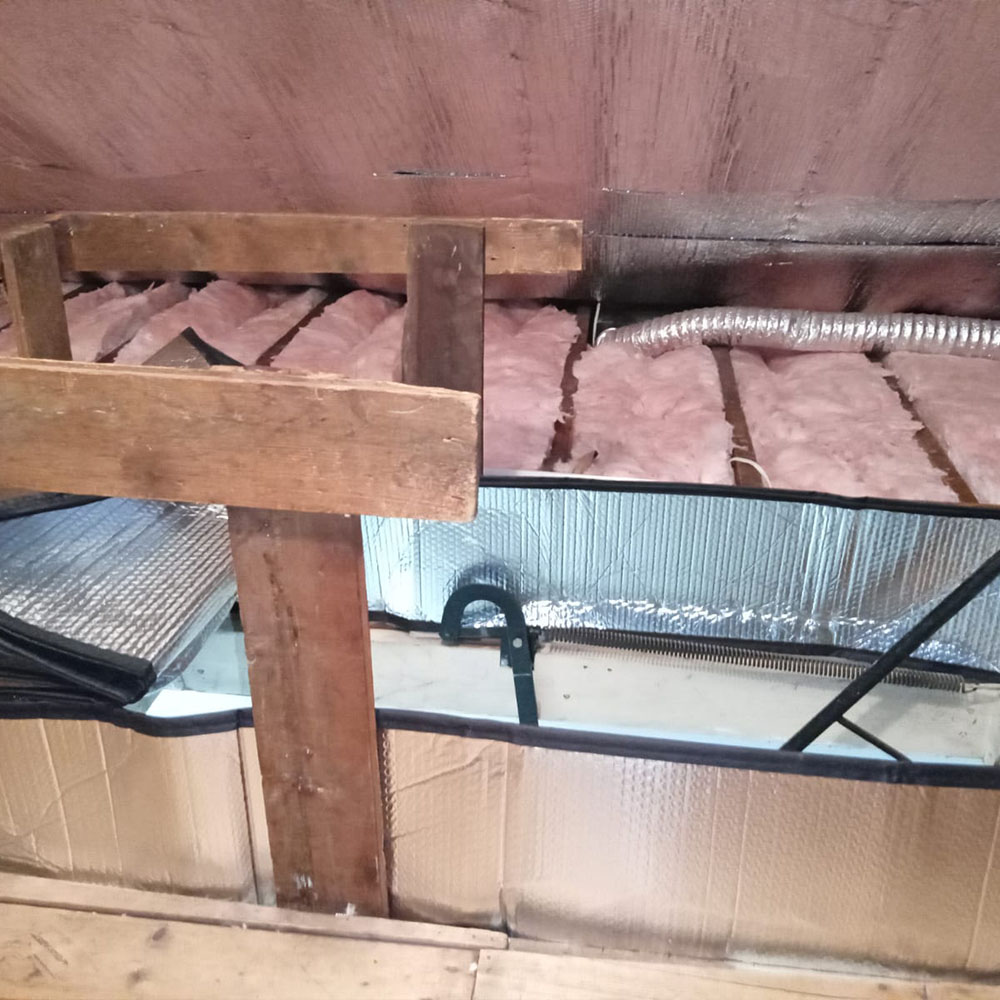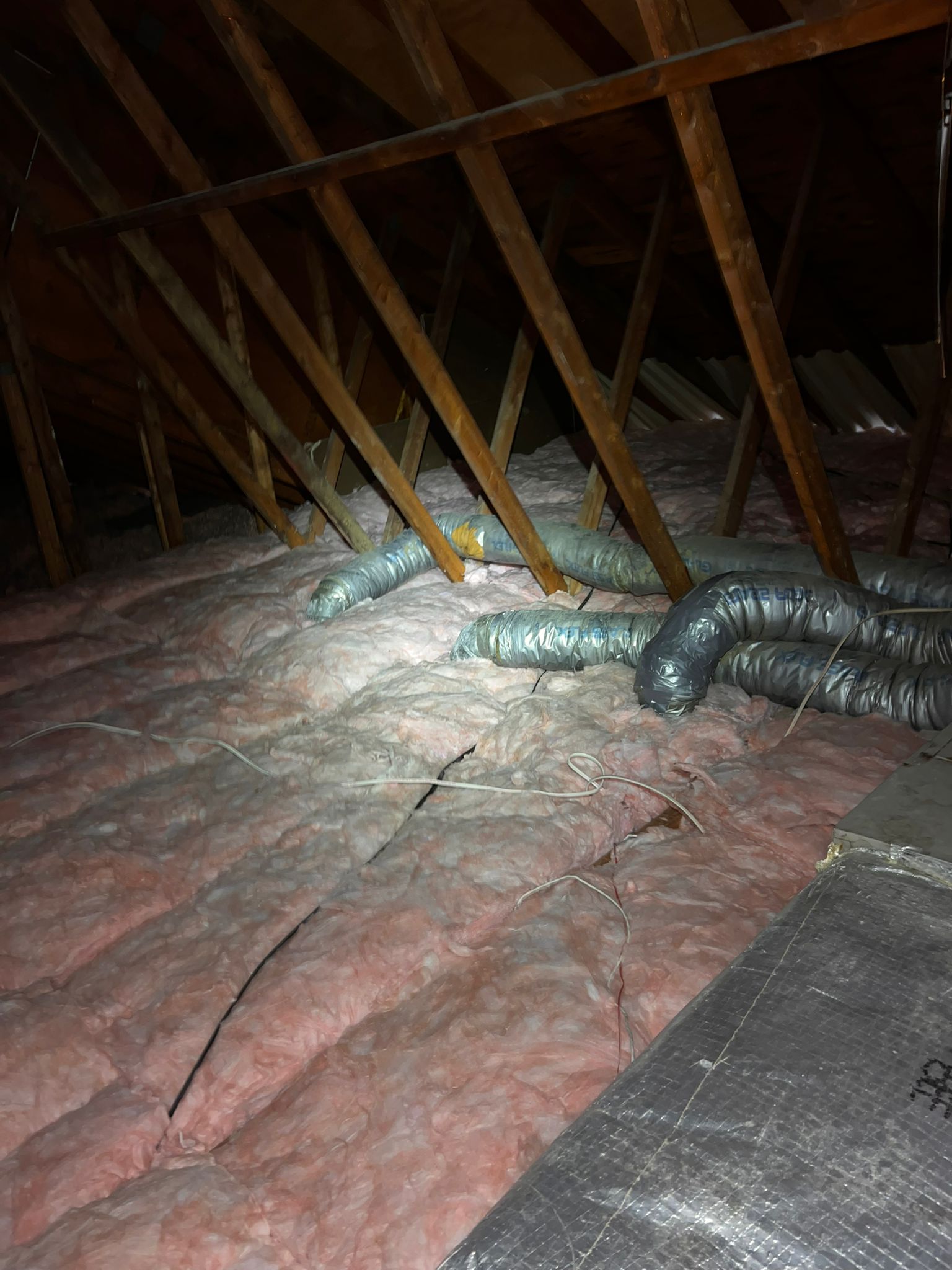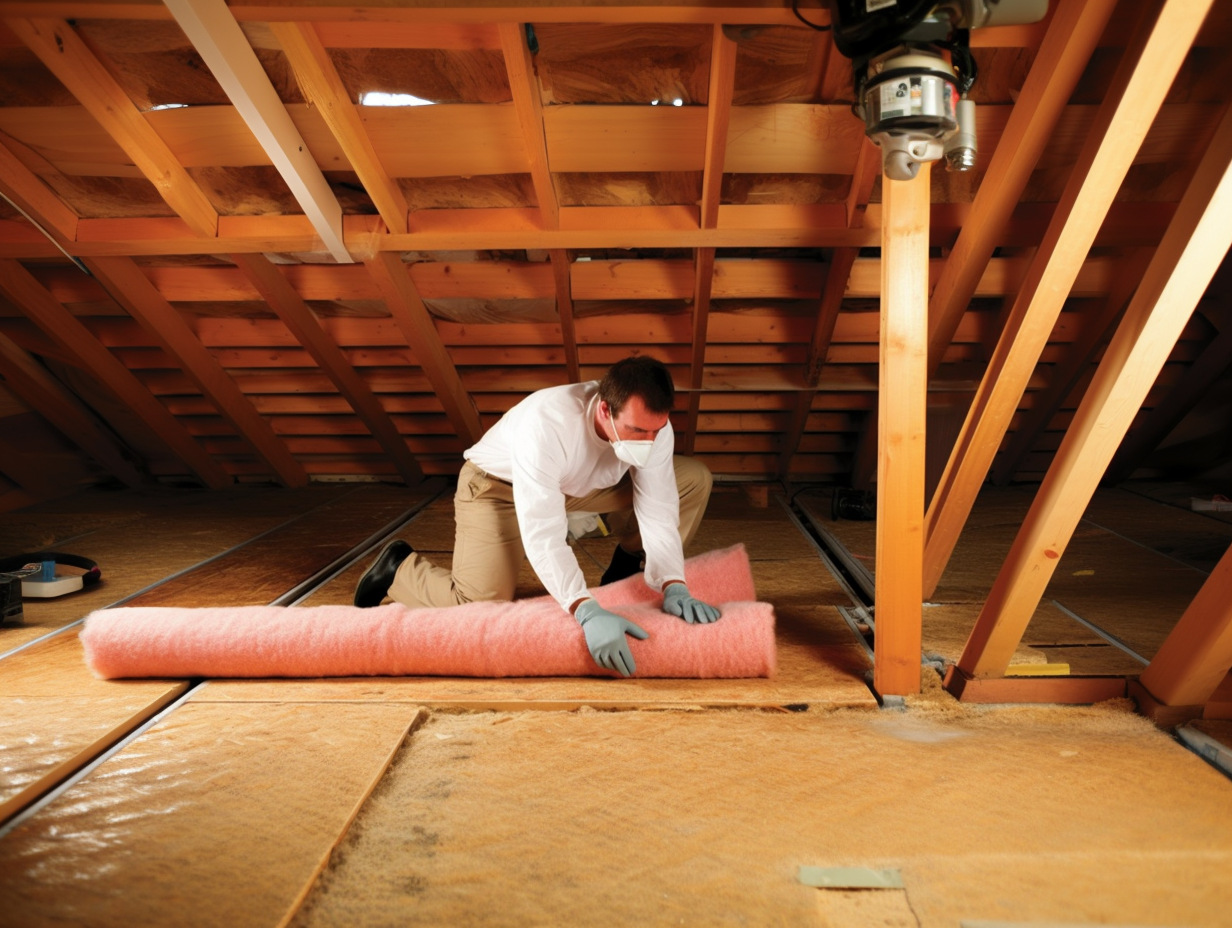
What is a Radiant Barrier?
What is a Radiant Barrier? You may have encountered radiant barriers if you’ve been searching for ways to increase energy efficiency in your attic space.
When you have raccoons living in your attic, they can quickly become a nuisance and create various problems beyond the noises they make. Raccoons can damage your attic, including tearing air ducts, damaging vents, destroying and breaking apart insulation, damaging pipes, chewing wood, and much more. Raccoons also leave toxic waste in their urine and feces, which is highly harmful to humans.
These factors alone make removing raccoons from your attic as soon as possible essential to prevent further damage and unwanted costs. Below, we’ll discuss the signs of having a raccoon in your attic, how to trap it in the attic, and why it’s always best to hire a professional to remove a raccoon.

Raccoons are known as sneaky rodents, but there are ways to tell if you’re dealing with a raccoon living in your attic. Noticing the signs of a raccoon problem can help you assess the situation and contact a professional for proper raccoon removal. Based on the current condition of your attic, you can tell whether or not the raccoons have lived for a while or are new to your home.
Signs you have a raccoon in the attic are:
Catching a raccoon is complex, and you should never attempt to catch one on your own. If you’ve encountered a raccoon, you should always contact a professional. Raccoons are brilliant animals. When captured by a raccoon trap, they will remember what happened, further requiring a change of tactics.
Not every professional uses raccoon traps when trying to catch a raccoon; however, when doing so, it’s best to use a no-kill raccoon trap or live cage to humanely catch a raccoon and return them to its natural environment.
When searching for a raccoon trap, Havahart traps are most used in the United States to catch a raccoon in your attic. There are particular raccoon traps created to accommodate the different sizes of raccoons. Raccoon traps are around thirty-two inches long, a foot high, and a foot wide.
Before catching a raccoon in the attic, it’s best to ensure the raccoon trap is the correct size to keep it inside safely. The raccoon trap may become caught in its door or escape if it is too small. When trapping a raccoon in your attic, always contact a professional with the proper tools and techniques to safely and efficiently remove it, and never attempt to trap and remove a raccoon yourself.
Regarding bait, raccoons eat almost anything they can get their paws on. If you like it, raccoons will enjoy it. That’s why raccoons love to make their way into trash cans at night. When catching a raccoon in the attic, you should know what bait you’re using to avoid catching other animals.
Although it varies per professional, many professionals use marshmallows to trap a raccoon in the attic. Many say marshmallows are one of the best things to use for bait. Marshmallows are tiny in size and resemble the eggs of other animals, so they appeal to raccoons for their sweetness.
You should never attempt to bait a raccoon yourself and should always contact a trained professional with the skills and knowledge to trap and remove raccoons.
When setting a raccoon trap, it’s best to inspect where raccoons walk most often. Setting a trap near their trail in the attic but away from other areas they can grab is best. Professionals should keep a raccoon trap at least six inches away from anything a raccoon can hold to avoid getting into the cage.
When setting the raccoon trap, it should be flat on your attic floor. Raccoons will avoid getting into the trap if your cage makes any noises or wobbles a certain way. Place leaves on the inside of the cage to help make the cage more enticing.
After setting, check the raccoon trap at least twice daily and never leave in full sun. If placed in attic areas with full sun, raccoons can become dehydrated and overheated. When setting the trap, it should also be disguised and with the bait placed in a trail leading up to the trap door.
Your bait should trail to the back of your cage when placing it. Once completed, then it’s time to wait patiently. If you have a raccoon in your attic, contact a trained professional with the proper tools and techniques to catch, remove, and place it humanely back into its natural environment.
After successfully trapping the raccoon, you can place a blanket or other coverings over the cage before attempting to pick it up. Never stick your fingers inside the cage; always hold the trap away from yourself. Raccoons can carry rabies, so you want to avoid any scratches or bites.
After trapping the raccoon, if you notice it has nipples, you should immediately release it into its natural environment. Nipples on a raccoon mean the raccoon is female and is carrying babies. If not released right away, the raccoon can starve and be unable to find food.
When releasing a raccoon with babies, they should always be released at least ten miles away from your residence so they don’t return.
In many states, trapping a raccoon is illegal, so contacting your local animal control office is essential. A professional can always solve the problem for you safely and efficiently.
Relocation is the best and most humane option after trapping a raccoon. When relocating the raccoon, they should always be released at least ten miles away from your home to avoid returning to your residence. You should always release a raccoon in a safe environment close to a food source.
Mother raccoons should always be transferred and released with their babies since babies can’t survive without their mothers.
Overall, there are many ways to remove and trap a raccoon alone, but the risks alone are too high to attempt and can make the situation much worse. At Master Attic, our professionals know that removing raccoons as soon as possible is essential to prevent further damage to your attic. At Master Attic, our raccoon removal service process includes the following:
If you’re hearing noises in your attic and are dealing with a raccoon problem, contact our experts today to schedule a free in-home estimate for our raccoon removal services.

What is a Radiant Barrier? You may have encountered radiant barriers if you’ve been searching for ways to increase energy efficiency in your attic space.

Maximizing Energy Efficiency: How Attic Insulation Experts Can Help When you improve your attic’s energy efficiency, you can significantly help improve the comfort of your

A Homeowner’s Guide to Attic Maintenance As homeowners, we probably should be paying more attention to ensuring we have a well-maintained attic. Since the attic

We strive endlessly to provide a service like no other; quality, safety and comfort is our #1 priority for your family.
Fully Licensed and Insured
NJ # 13VH09509100
PA # 147980
Look out for a confirmation email!
A Master Attic Pro Will Reach Out To You Shortly
